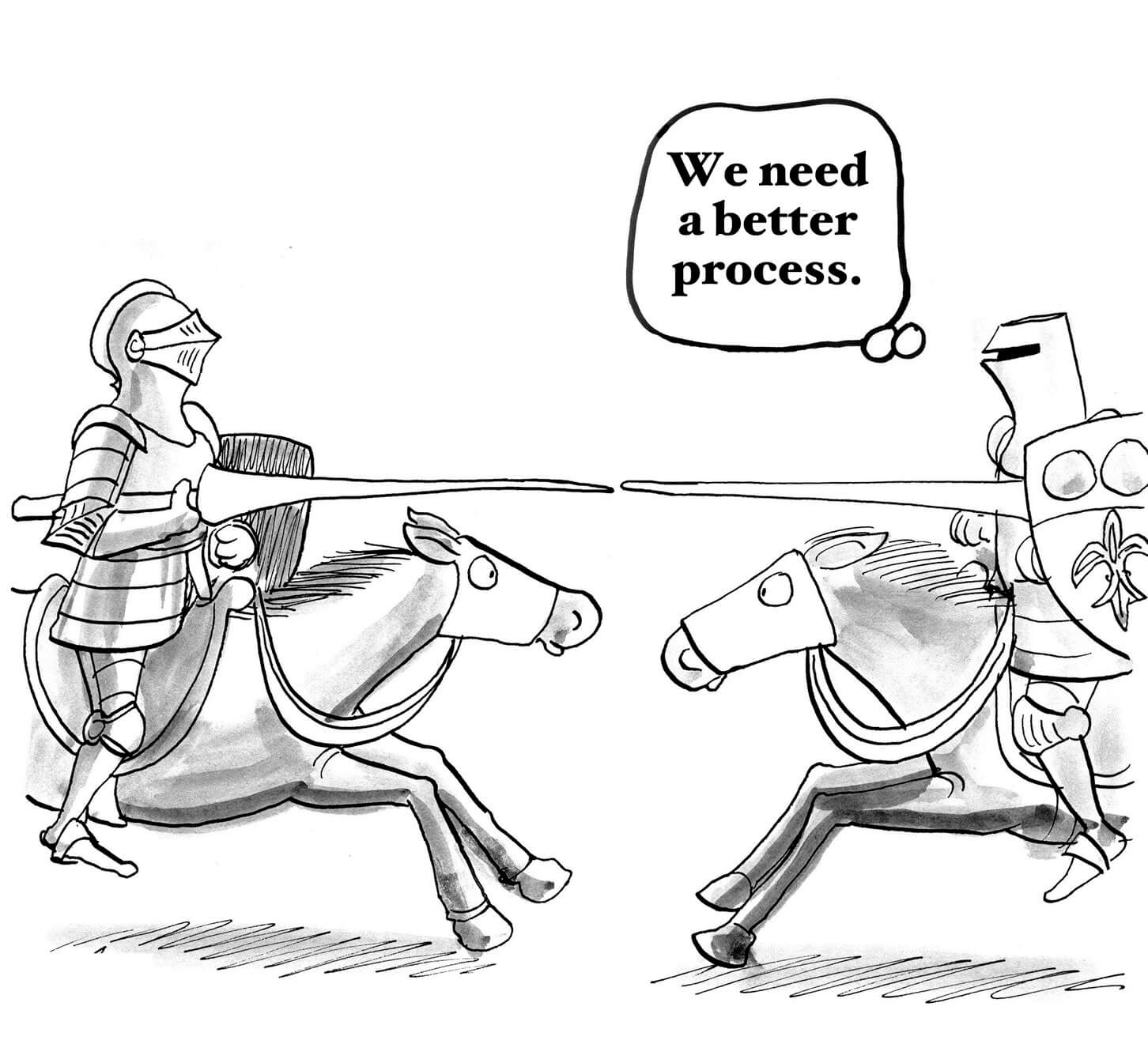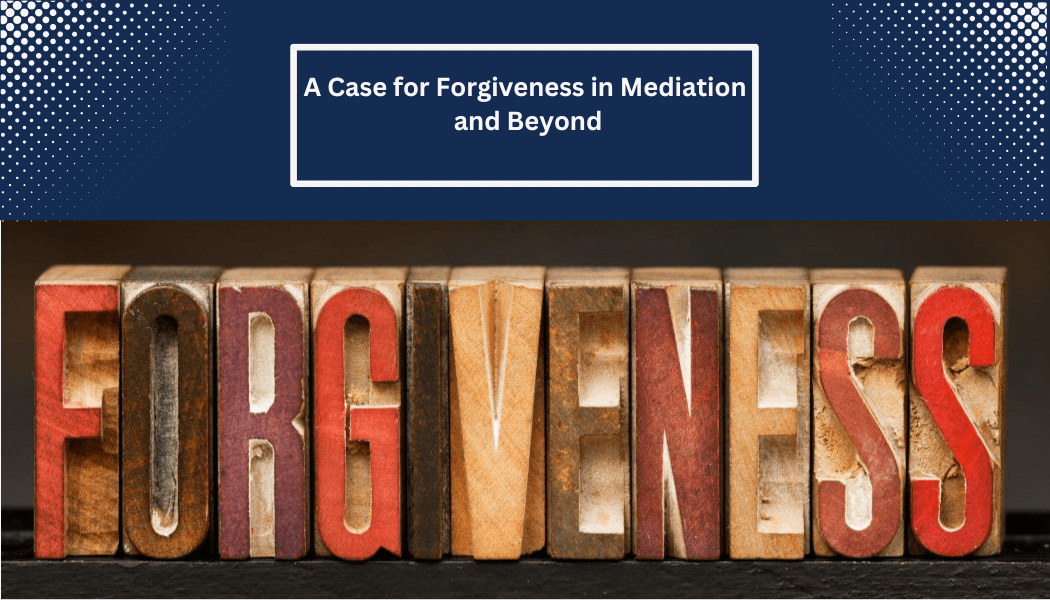I read with great interest the Harvard Law School Program on Negotiation (PON) article this past month concerning the “hybrid tool” of mediation/arbitration, or “med/arb,” as it is often referred to. The article suggested that med/arb is becoming increasingly popular as an approach to dispute resolution.
Med/arb has been around for as long as there has been a discussion of the multi-door approach to dispute resolution. As a tool, it offers many benefits that separate approaches are lacking, specifically, the combination of a facilitated approach to negotiation, coupled with the finality of an arbitration award. Med/arb represents, for many practitioners, the optimal process design, but as with many alternative dispute processes, it’s imperative to gain a deeper understanding of both its benefits and risks.
What I like most about the med/arb discussion is that it begins with the realization that thoughtful attention needs to be given to the parties’ true needs as well designing a process to best meet those needs. This recognition of a “needs based process,” coupled with a convening conversation to address those needs, is an important first step in any dispute resolution process.
The most often heard criticism of the med/arb process was identified in the PON article: the very legitimate concern that the parties will be guarded in their disclosures to the mediator in any process where the mediator may later be called upon to serve as a finder of fact. A related concern is how to prevent the mediator from hearing information in mediation that might shape his or her perspective, with or without conscious awareness, when that information would never be allowed as evidence in a more formal process.
A Successful Mediation/Arbitration Example
I want to offer, as an example, a mediation where we designed a process that addressed those concerns, while still providing the benefits of the med/arb process. Years ago, I was brought into an employment dispute in Cincinnati, Ohio. In my initial convening conversation, it became clear that the parties wanted the traditional benefits of mediation, meaning the opportunity to retain control of decisions. Yet, because they brought in a professional from across the country, they also wanted to ensure the finality that comes with an arbitrated decision. We discussed a variety of options, including using two separate individuals to fill the different roles. This suggestion was rejected, in part, because the sensitive nature of the dispute required a mediator/arbitrator from outside the area, and the cost of bringing in two professionals was prohibitive.
After listening to the parties describe their needs, I suggested a two-day hybrid process. The first day, I would preside over a formal arbitration hearing. The parties would have the opportunity to present facts to an arbitrator and be constrained by normal rules of evidence. There would be no opportunity for ex parte communication. Following the arbitration hearing, I would adjourn to my hotel room and write an arbitration award, which I would then bring to day two in a sealed envelope. On the second day, we would begin a traditional mediation process. In the event that the parties were unable to agree on a negotiated agreement, I would leave the arbitration award envelope for them to open, resulting in a binding solution.
The parties readily agreed to this unique “arb/med” process. One can only imagine the visual image of me, during difficult moments in mediation, pointing to the sealed envelope sitting in the middle of the table and saying, “You can always let someone else tell you what you need to settle for.” This not-too-subtle reminder kept the parties working toward settlement well after others may have given up.
The upshot of this creative approach was that the parties finally agreed on a mediated solution at the very end of the second day. Nevertheless, it didn’t constrain either side from literally following me down the elevator and to the taxi stand in hopes that I would reveal the arbitrator’s decision. Recognizing the psychological value of letting both sides claim victory, I only shared with them that the final decision was somewhere in-between their final bargaining positions.
Mediation/Arbitration with a Twist
Sometimes, the benefits of a hybrid process can be more nuanced and not readily apparent during the convening phase of the mediation process. All experienced mediators have had to adjust “on the fly” when a mediation stalled out over a single disputed issue that could benefit from an arbitrator’s decision. A classic example in my world is a negotiated agreement that turns exclusively on the interpretation of an insurance provision. There has been more than one occasion, in late stage negotiation, where I have persuaded the parties to agree on a settlement, based on the subsequent determination by an arbitrator on a narrow and discreet issue. Often those “subject to” agreements require bringing in an arbitrator with a background in insurance coverage. Sometimes the parties ask me to serve in that role.
I once had the opportunity to use a hybrid approach in a unique setting. The dispute was between a Catholic university and a large printing company that printed secular books for higher education. More specifically, the dispute involved interpretation of a contract that arguably bound the printing company to future conduct and price guarantees. The parties commenced a traditional mediation and, while making good progress toward a negotiated resolution, reached impasse when both sides became stuck over the question of who was right. Ultimately, they were able to agree to a negotiated resolution that made economic sense, but neither side was willing to give up on the question of principle. Stated differently, both sides were equally invested in claiming moral victory in the dispute.
I offered the parties the concept of a med/arb process with a slight twist. I recommended that the negotiated resolution would be contingent on my issuing a post mediation arbitration award. The unique aspect of this suggestion was that the arbitration award would have no binding impact on the final agreement signed at the mediation, except that it would give both sides the benefit of an arbitrator’s perspective on the substance of the contract interpretation dispute. The parties readily agreed to this creative approach and signed the negotiated agreement contingent on my decision. A week later, I provided an “arbitrator’s award,” outlining the legal positions I found convincing and why. Years later, I still bump into the attorneys from that mediation who comment on the uniqueness and effectiveness of that hybrid approach.
Potential Risks and Traps for the Unwary
As with most hybrid processes, there are potential risks and traps for the unwary, so here’s a word of caution. Med/arb is a unique tool that I’ve used only a handful of times in thirty years. I prefer, whenever possible, to rely on the mediation approach and its right of self-determination. The risk of taking more creative approaches is that they sometimes blur the lines in ways that portend ethical and/or legal consequences.
I am reminded of a well-intended colleague, who invited the parties in the middle of a formal arbitration to suspend the process briefly to allow the opportunity to explore a facilitated negotiation. When those negotiations proved unsuccessful, the arbitration resumed and ultimately resulted in an arbitrator’s award. The losing party then challenged the arbitrator’s award on the basis that the process was inappropriate and resulted in potential bias. The court agreed and overturned the award, resulting in wasted time and money.
Hopefully, the examples cited above provide color to the Harvard Law School PON article’s theme. Hybrid processes, if used thoughtfully and creatively, might offer an elixir for meeting the needs of parties in unique disputes. Clearly, med/arb and its nuanced variations are process designs that an advanced mediator should have at the ready as she or he engages the parties in convening conversations.
If you would like to read the article in full, you can find it here.
Bruce A. Edwards is an ADR industry pioneer and recent chairman of the board of directors of JAMS, this country’s largest private provider of ADR services. Along with his wife, Susan Franson Edwards, Mr. Edwards recently cofounded Edwards Mediation Academy, an online education platform dedicated to improving the skills of mediators around the world.





